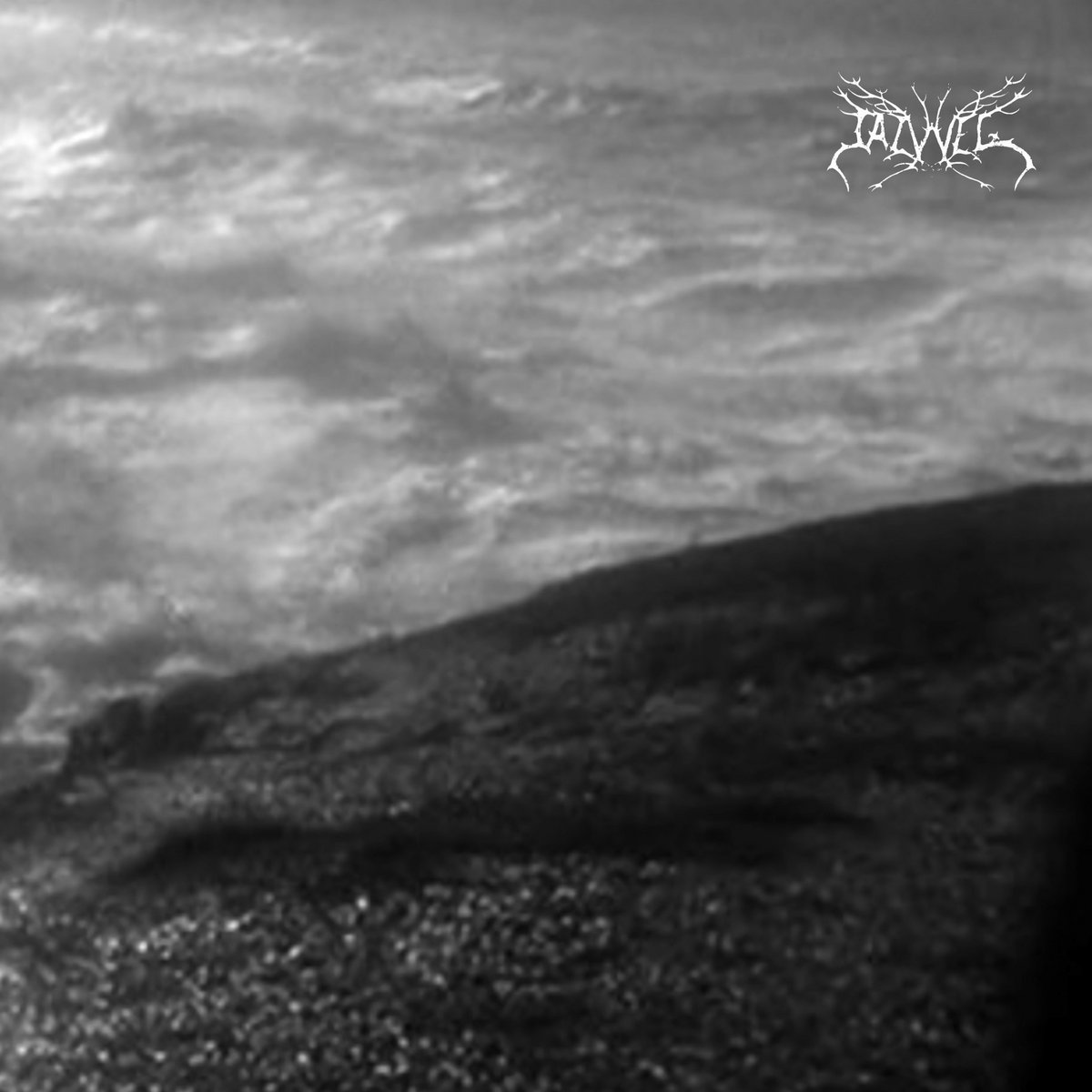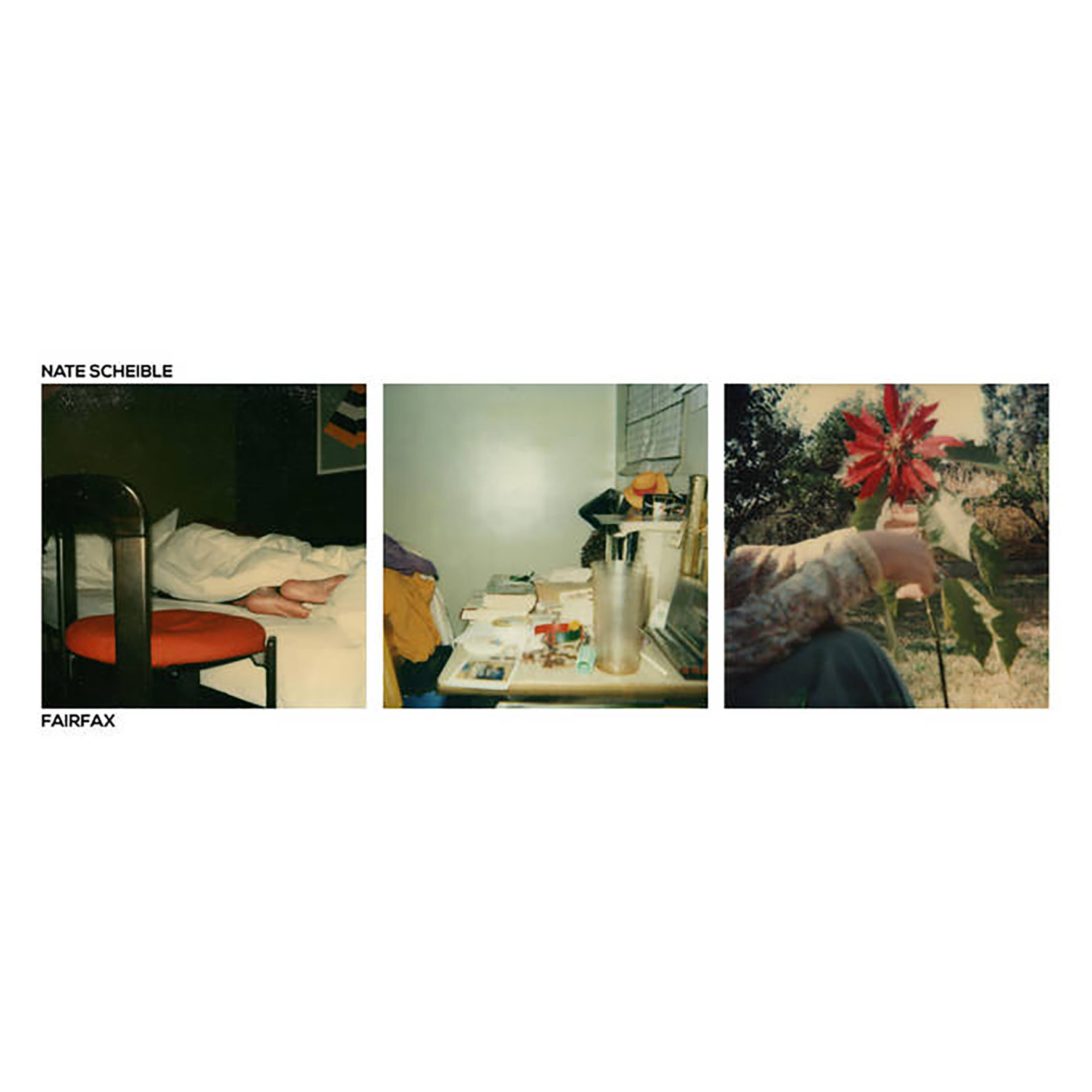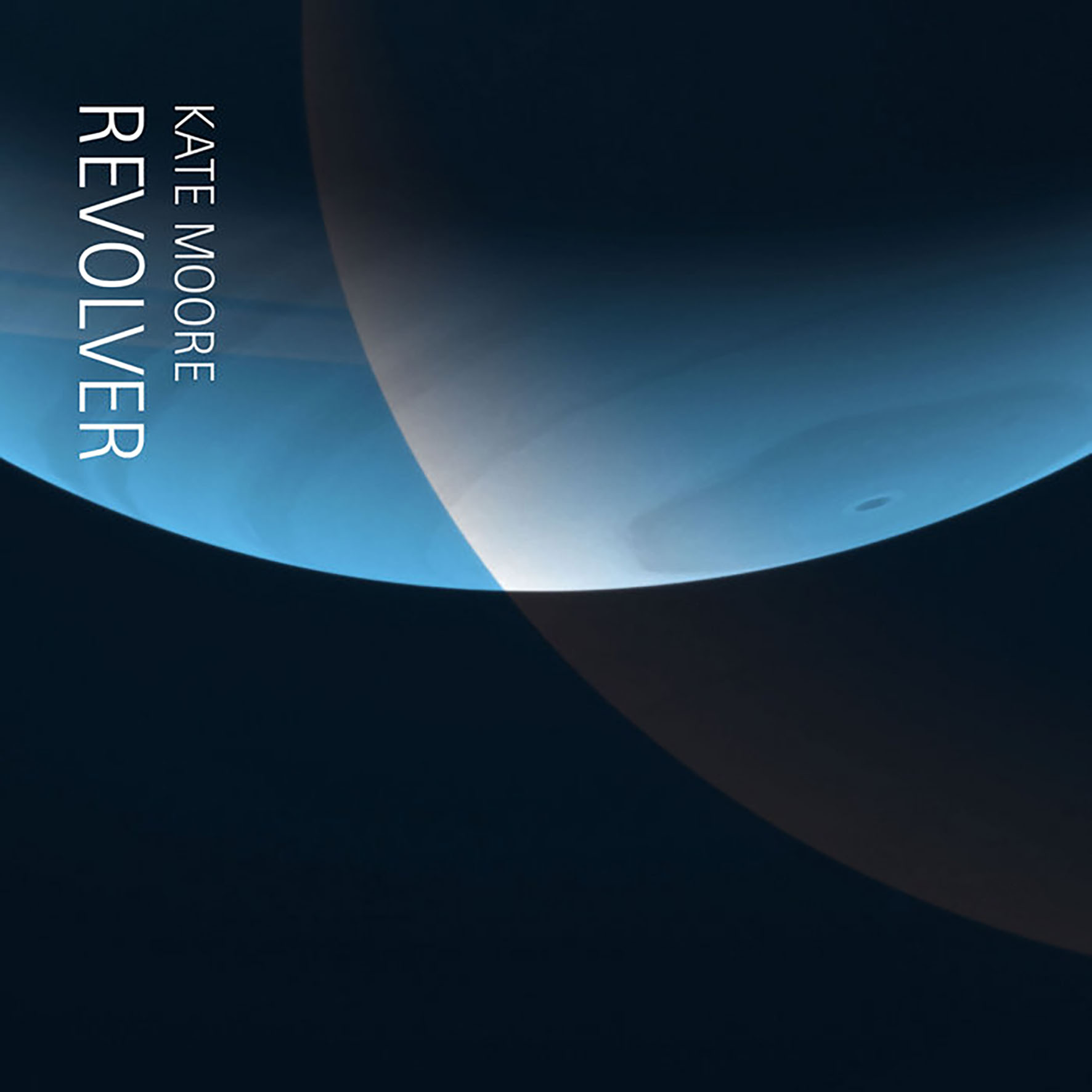
The Opalio brothers have been reliably surprising me with adventurous detours and evolutions for years, but this latest album is a creative leap into even more unexpected territory than usual. In some ways, that can be attributed to the unusually sparse gear involved (two glockenspiels and a single condenser microphone), which makes it quite a bit easier on the ears than usual for the dissonance-averse. In fact, I would not even have immediately guessed that this was an MCIAA album if I had first heard it while blindfolded. On a deeper level, however, this may very well be one of the duo's defining statements (and a sneakily brilliant one at that). The Opalios long ago cast aside earthly melodies, harmonies, and instruments in their journey into the furthest regions of the atonal, psychedelic cosmos, so I would be hard pressed to think of something even more outré for the next phase. As it turns out, however, I would have been asking the wrong question altogether, as the Opalios nimbly sidestepped that stylistic challenge and opted for something far cooler than another intensification of their characteristic otherworldliness: they dissolved into pure light (musically, at least). Put in their own words, this album represents "the blinding darkness coming from a dying flame and a new light not yet discernible on an increasingly undefined horizon." Given how rampant dying flames and undefined horizons are these days, Music for Phantoms (IV) feels uncannily tapped into the earthly zeitgeist (particularly for a duo who frequently seem to exist in an alternate dimension).
Elliptical Noise/Opax
In characteristically colorful fashion, the Opalios describe the genesis of Music for Phantoms (IV) thusly: "recorded in the middle of the night...in the Western Alps with only 2 glockenspiels, wordless vocals and a single condenser microphone to capture the essence of the screaming silence." Naturally, the cover art thematically complements that vision, as it comes from a Polaroid that abstractly captured a light installation that the brothers dragged through the snow at night (few artists are as tirelessly committed to finding and creating otherworldly beauty, magic, and poetry as the Opalio brothers). While nearly everything about this album feels fresh, inventive, and heartfelt, it is nominally a continuation of a side project that began in 2007 and last surfaced a decade ago. Notably, this album is a radically different animal than the first three installments in both tone and instrumentation, but it does share the series' exclusive commitment to acoustic sounds. Even acoustic sounds can be very weird in the hands of the Opalios, however, as evidenced by the first two minutes of the opening "Traces of Shooting Stars" (it calls to mind a bunch of marbles dropped on a metal platter). That is admittedly an enigmatic and curious way to kick off an album this tenderly beautiful, but absolutely everything that follows is quietly and mesmerizingly sublime.
Given the album's hyper-minimal instrumentation, its three pieces all feel roughly cut from the same cloth, but they each have their own distinctive character. In "traces of shooting stars," for example, it sounds like an enchanted music box has become untethered from the rigidity of time signatures and drifted into a reverie of dreamlike, gossamer melody. The following "ocean of iridescent silence," on the other hand, takes a more shimmering and rippling approach, as the endlessly sweeping glockenspiel runs leave a quivering haze of celestial bliss in their wake. The closing "estranging analog morphologies" initially feels quite similar (sweeping cascades of notes leave behind a blurred and beautiful vapor trail), but it steadily becomes more structured and percussive before unexpectedly dissolving into a quietly lovely and hymn-like final act. It was a genuine surprise to hear Roberto's voice used in such a naked and melodic way. I am reluctant to use the word "ambient" to describe the overall feel of Music for Phantoms (IV), as it is constructed from Coltrane-esque sheets of sound, but it does evoke a pleasant state of suspended animation and strong sense of place: this album makes me feel like I have just stepped out of my remote mountain cabin to take in a gorgeously hallucinatory canopy of swirling and shimmering stars. I cannot think of any other album that successfully casts a similar spell and it is quite a lovely and immersive place to linger, so Music for Phantoms (IV) will probably connect with a hell of a lot more people than My Cat is an Alien's more characteristically challenging vision. It certainly deserves to reach a lot of new ears, as it feel like one of the strongest and most focused albums of the Opalios' career.
Samples can be found here.
 John McGuire has an impressive background in the study and evolution of electronic music: not least his time with Stockhausen at Darmstadt summer schools and subsequent commissions for German radio. Pulse Music is a unique and lively collection (1975-79) that skates across similar post-minimalist terrain as Reich and Riley and kills any lingering debate about the merits of serialism. McGuire created pulse layers in the studios of WDR and the University of Cologne, which to this day possess astounding clarity and separation, allied to marvelous tempo changes.
John McGuire has an impressive background in the study and evolution of electronic music: not least his time with Stockhausen at Darmstadt summer schools and subsequent commissions for German radio. Pulse Music is a unique and lively collection (1975-79) that skates across similar post-minimalist terrain as Reich and Riley and kills any lingering debate about the merits of serialism. McGuire created pulse layers in the studios of WDR and the University of Cologne, which to this day possess astounding clarity and separation, allied to marvelous tempo changes.


 This long-awaited follow up to Malone's 2019 cult masterpiece The Sacrificial Code is an unexpected blend of the familiar and the unfamiliar, as the Stockholm-based composer trades in her now signature pipe organ for "a complex electroacoustic ensemble." While that new approach certainly features an ambitiously expanded instrumental palette (trombone, bass clarinet, boîte à bourdon. sinewave generator, and ARP 2500 synth), Living Torch is still instantly recognizable as Malone's work both stylistically and structurally. Notably, the piece was "commissioned by GRM for its legendary loudspeaker orchestra," which makes a lot of sense in hindsight, as Living Torch sometimes improbably feels like the work of a drone-obsessed medieval organist who somehow managed to get ahold of Sunn O)))'s gear and some ancient battle horns. Given those enhancements, Living Torch can reasonably be described as a more conspicuously doom-inspired release than The Sacrificial Code. Admittedly, that takes this particular album a bit out of my own personal comfort zone, but I love it anyway and remain firm in my belief that Malone is one of the most singular and fascinating composers of her generation.
This long-awaited follow up to Malone's 2019 cult masterpiece The Sacrificial Code is an unexpected blend of the familiar and the unfamiliar, as the Stockholm-based composer trades in her now signature pipe organ for "a complex electroacoustic ensemble." While that new approach certainly features an ambitiously expanded instrumental palette (trombone, bass clarinet, boîte à bourdon. sinewave generator, and ARP 2500 synth), Living Torch is still instantly recognizable as Malone's work both stylistically and structurally. Notably, the piece was "commissioned by GRM for its legendary loudspeaker orchestra," which makes a lot of sense in hindsight, as Living Torch sometimes improbably feels like the work of a drone-obsessed medieval organist who somehow managed to get ahold of Sunn O)))'s gear and some ancient battle horns. Given those enhancements, Living Torch can reasonably be described as a more conspicuously doom-inspired release than The Sacrificial Code. Admittedly, that takes this particular album a bit out of my own personal comfort zone, but I love it anyway and remain firm in my belief that Malone is one of the most singular and fascinating composers of her generation. On this latest full-length, the perennially eclectic and boldly adventurous duo of Drew Daniel and MC Schmidt take a break from mining weird and esoteric source material to focus their energies on paying homage to underheard Polish composer and Krzysztof Penderecki associate Bogusław Schaeffer. Matmos were given full access to work their mindbending magic on Schaeffer's complete recorded works and the resultant album is as characteristically unpredictable and hard-to-categorize as ever: instead of remixing or reinterpreting the Polish composer's work, Matmos instead took "tissue samples of DNA from past compositions" and "mutated them into entirely new organisms that throb with an alien vitality." Put another way, Regards/Ukłony dla Bogusław Schaeffer attempts to create a conversation or bridge between the "utopian 1960s Polish avant-garde" and "the contemporary dystopian cultural moment." That is certainly intriguing and fertile terrain for a Matmos album, but the resultant songs wound up somewhere even more delightful and confounding than usual, often approximating a collision between fragmented exotica, kosmische, and a Kubrickian sci-fi nightmare. Naturally, that will be very appealing territory for most long-time Matmos fans, as this album is an especially inspired "everything and the kitchen sink" tour de force of quite disparate stylistic threads woven together in playfully disorienting and mischievous fashion by an talented international cast of virtuousos, eccentric visionaries, and plunderphonic magpies.
On this latest full-length, the perennially eclectic and boldly adventurous duo of Drew Daniel and MC Schmidt take a break from mining weird and esoteric source material to focus their energies on paying homage to underheard Polish composer and Krzysztof Penderecki associate Bogusław Schaeffer. Matmos were given full access to work their mindbending magic on Schaeffer's complete recorded works and the resultant album is as characteristically unpredictable and hard-to-categorize as ever: instead of remixing or reinterpreting the Polish composer's work, Matmos instead took "tissue samples of DNA from past compositions" and "mutated them into entirely new organisms that throb with an alien vitality." Put another way, Regards/Ukłony dla Bogusław Schaeffer attempts to create a conversation or bridge between the "utopian 1960s Polish avant-garde" and "the contemporary dystopian cultural moment." That is certainly intriguing and fertile terrain for a Matmos album, but the resultant songs wound up somewhere even more delightful and confounding than usual, often approximating a collision between fragmented exotica, kosmische, and a Kubrickian sci-fi nightmare. Naturally, that will be very appealing territory for most long-time Matmos fans, as this album is an especially inspired "everything and the kitchen sink" tour de force of quite disparate stylistic threads woven together in playfully disorienting and mischievous fashion by an talented international cast of virtuousos, eccentric visionaries, and plunderphonic magpies. This is my first deep immersion into Joëlle Vinciarelli & Eric Lombaert's deeply unconventional "free metal" duo, but I have long been a fan of the pair's noise/drone band La Morte Young (as well as Vinciarelli's repeat collaborations with My Cat is an Alien). Notably, there is absolutely nothing recognizably "metal" about this latest release, as the closest kindred spirits are probably outer limits psychonauts like the LAFMS milieu or Borbetomagus. However, even those signposts are inadequate at conveying how far Talweg have descended into their own personal rabbit hole with this album, as these four pieces feel both unstuck in time and decidedly pagan/occult-inspired (which makes sense, given Vinciarelli's passion for collecting unusual and ancient instruments). Further muddying the waters, this album arguably captures the duo in "soundtrack mode," as two of the pieces are early/rehearsal versions of pieces composed for a Monster Chetwynd exhibition, while a third borrows a nursery rhyme from Marcel Hanoun's "Le Printemps" as its central theme. While "rehearsals for an exhibition soundtrack" admittedly does not sound all that appealing on paper, these recordings are quite compelling in reality, as Des tourments si grands often feels like a remarkably inspired and deeply unconventional stab at outsider free jazz. Fans of Vinciarelli's work with MCIAA will definitely want to investigate this one, as it journeys into similarly alien territory, but the addition of Lombaert's killer drumming takes that aesthetic in a far more explosive and visceral direction.
This is my first deep immersion into Joëlle Vinciarelli & Eric Lombaert's deeply unconventional "free metal" duo, but I have long been a fan of the pair's noise/drone band La Morte Young (as well as Vinciarelli's repeat collaborations with My Cat is an Alien). Notably, there is absolutely nothing recognizably "metal" about this latest release, as the closest kindred spirits are probably outer limits psychonauts like the LAFMS milieu or Borbetomagus. However, even those signposts are inadequate at conveying how far Talweg have descended into their own personal rabbit hole with this album, as these four pieces feel both unstuck in time and decidedly pagan/occult-inspired (which makes sense, given Vinciarelli's passion for collecting unusual and ancient instruments). Further muddying the waters, this album arguably captures the duo in "soundtrack mode," as two of the pieces are early/rehearsal versions of pieces composed for a Monster Chetwynd exhibition, while a third borrows a nursery rhyme from Marcel Hanoun's "Le Printemps" as its central theme. While "rehearsals for an exhibition soundtrack" admittedly does not sound all that appealing on paper, these recordings are quite compelling in reality, as Des tourments si grands often feels like a remarkably inspired and deeply unconventional stab at outsider free jazz. Fans of Vinciarelli's work with MCIAA will definitely want to investigate this one, as it journeys into similarly alien territory, but the addition of Lombaert's killer drumming takes that aesthetic in a far more explosive and visceral direction. Every now and then, I stumble upon a singular artist whose work has somehow managed to remain largely undocumented and entirely under the radar all but the most devout underground music fans. Aaron Taylor Kuffner is the latest visionary to fall into this category, as his Zemi17 project has been around for a quarter century now and he has only just gotten around to releasing his full-length debut. Notably, Gamelatron Bidadari is quite a departure from Zemi17's previous two EPs on The Bunker's house label, as Impressions (2014) and Zipper (2016) were an attempt to integrate Taylor Kuffner's techno past with more natural and timeless sounds originating from his time spent studying gamelan in Indonesia. On this latest release, all traces of Zemi17's dancefloor past have disappeared to showcase another side of Taylor Kuffner's unique artistry: the Gamelatron project that he co-created in 2008, which is billed as "the world’s first fully robotic gamelan orchestra." Since the project's inception, Taylor Kuffner has built more than 70 site-specific kinetic sculptures and provided his signature "immersive, visceral experience" to more than a million people across the globe. The Gamelatron Bidadari captured here is but one of those sculptures and originally debuted as part of an exhibit entitled "No Spectators: The Art of Burning Man" at The Smithsonian's Renwick gallery. While a lot of site-specific installations understandably do not translate terribly well to home listening, this one is a delightful exception, as the resultant recordings feel like an ingenious twist on a timeless favorite, taking traditional gamelan music into an even more loopingly hypnotic direction than usual.
Every now and then, I stumble upon a singular artist whose work has somehow managed to remain largely undocumented and entirely under the radar all but the most devout underground music fans. Aaron Taylor Kuffner is the latest visionary to fall into this category, as his Zemi17 project has been around for a quarter century now and he has only just gotten around to releasing his full-length debut. Notably, Gamelatron Bidadari is quite a departure from Zemi17's previous two EPs on The Bunker's house label, as Impressions (2014) and Zipper (2016) were an attempt to integrate Taylor Kuffner's techno past with more natural and timeless sounds originating from his time spent studying gamelan in Indonesia. On this latest release, all traces of Zemi17's dancefloor past have disappeared to showcase another side of Taylor Kuffner's unique artistry: the Gamelatron project that he co-created in 2008, which is billed as "the world’s first fully robotic gamelan orchestra." Since the project's inception, Taylor Kuffner has built more than 70 site-specific kinetic sculptures and provided his signature "immersive, visceral experience" to more than a million people across the globe. The Gamelatron Bidadari captured here is but one of those sculptures and originally debuted as part of an exhibit entitled "No Spectators: The Art of Burning Man" at The Smithsonian's Renwick gallery. While a lot of site-specific installations understandably do not translate terribly well to home listening, this one is a delightful exception, as the resultant recordings feel like an ingenious twist on a timeless favorite, taking traditional gamelan music into an even more loopingly hypnotic direction than usual. Originally a musical radio play, these twelve tracks excavate and spotlight the life and work of original Beat poet Bob Kaufman; and with Kaufman the life and the work are genuinely inseparable. A mentor to Kerouac, and dubbed the Black American Rimbaud, Kaufman endured savage SFPD brutality, electroshock treatment, and incarceration, before his young and obscure death in abject poverty. Kaufman had purposefully stilled his own voice with a vow of silence stretching from the JFK assassination until the end of the Vietnam War, yet here it still resounds with the speed and spirit of surrealist jazz, forever “lost in a dream world, where time is told with a beat.”
Originally a musical radio play, these twelve tracks excavate and spotlight the life and work of original Beat poet Bob Kaufman; and with Kaufman the life and the work are genuinely inseparable. A mentor to Kerouac, and dubbed the Black American Rimbaud, Kaufman endured savage SFPD brutality, electroshock treatment, and incarceration, before his young and obscure death in abject poverty. Kaufman had purposefully stilled his own voice with a vow of silence stretching from the JFK assassination until the end of the Vietnam War, yet here it still resounds with the speed and spirit of surrealist jazz, forever “lost in a dream world, where time is told with a beat.”




